Ford Mustang (1999-2004) Service Manual: Installation
1. CAUTION: Do not use metal scrapers, wire brushes, power abrasive discs or other abrasive means to clean the sealing surfaces. These tools cause scratches and gouges which make leak paths. Use a plastic scraping tool to remove all traces of old sealant.
Clean and inspect the mating surfaces.
2. NOTE: If the oil pan is not secured within four minutes, the sealant must be removed and the sealing area cleaned with metal surface cleaner. Allow to dry until there is no sign of wetness, or four minutes, whichever is longer. Failure to follow this procedure can result in future oil leakage.
Apply the silicone gasket and sealant at the rear oil seal retainer-to-cylinder block sealing surface.
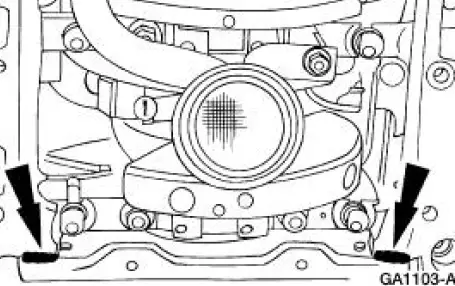
3. NOTE: If the oil pan is not secured within four minutes, the sealant must be removed and the sealing area cleaned with metal surface cleaner. Allow to dry until there is no sign of wetness, or four minutes, whichever is longer. Failure to follow this procedure can result in future oil leakage.
Apply the silicone gasket and sealant at the engine front cover-to-cylinder block mating surface.
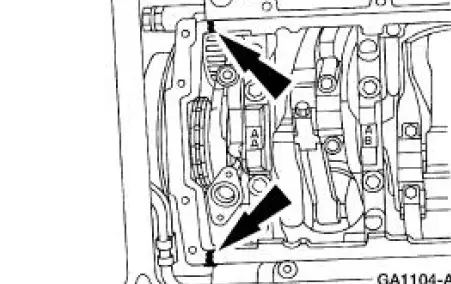
4. Install the oil pan and gasket and loosely install the bolts.
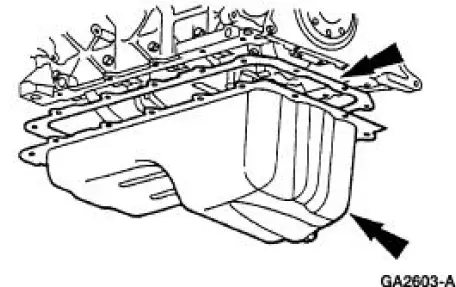
5. Tighten the bolts in the sequence shown in three stages.
- Stage 1: Tighten to 2 Nm (18 lb-in).
- Stage 2: Tighten to 20 Nm (15 lb-ft).
- Stage 3: Tighten an additional 60 degrees.
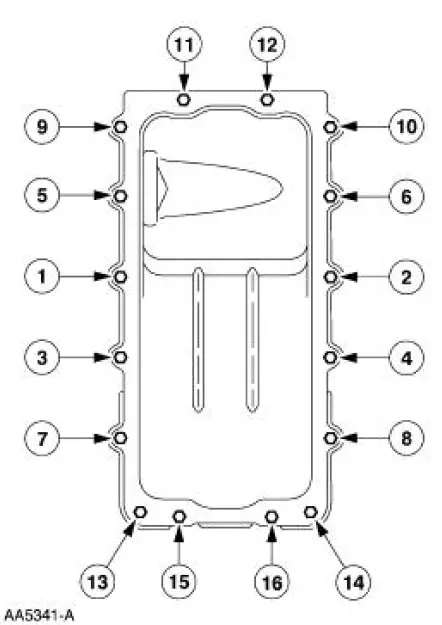
6. Install the oil pan drain plug.
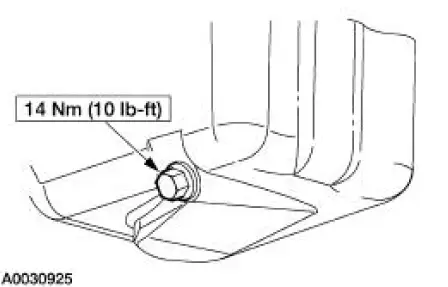
7. Raise the front subframe into position.
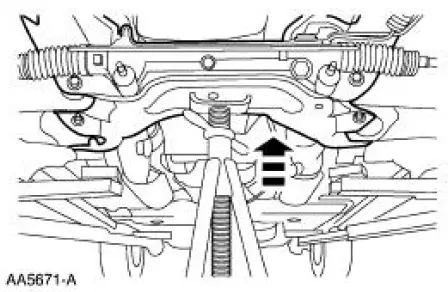
8. Install the two upper subframe bolts.
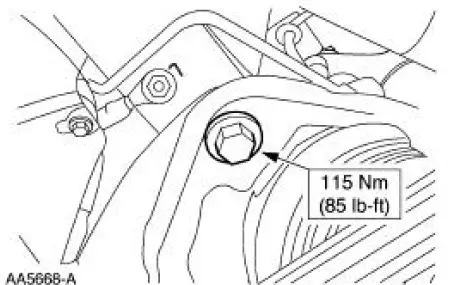
9. Install the two lower subframe bolts.
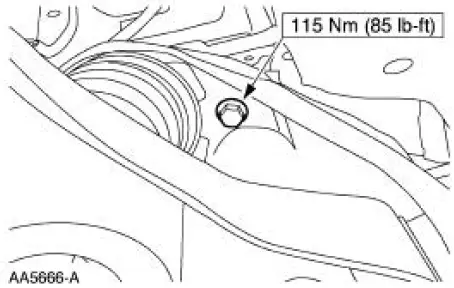
10. Install the engine mount bolts.
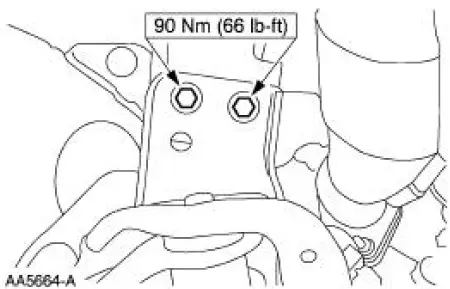
11. Position the safety stand aside.
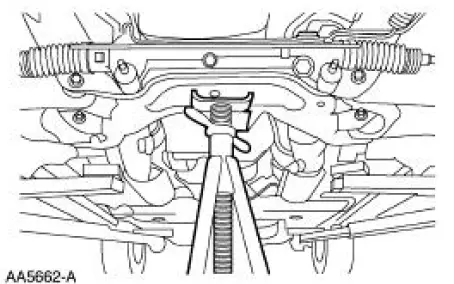
12. Using the special tool, release the tension from the front coil springs and remove the special tool.
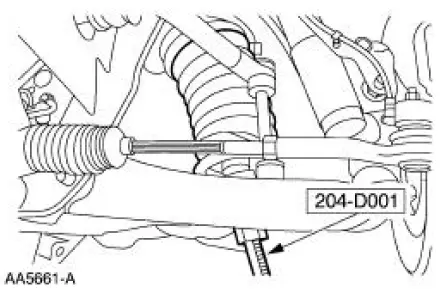
13. Install the engine mount nuts.
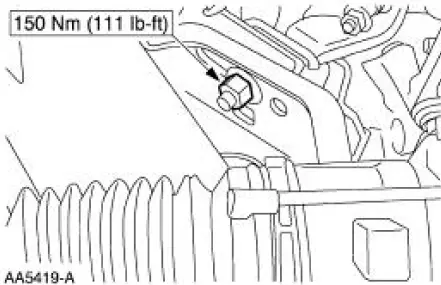
14. Lower the vehicle.
15. Using the special tools, lower the engine and remove the special tool.
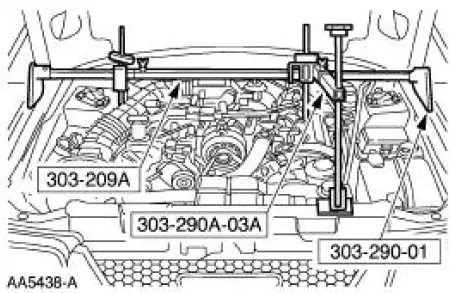
16. Remove the special tool.
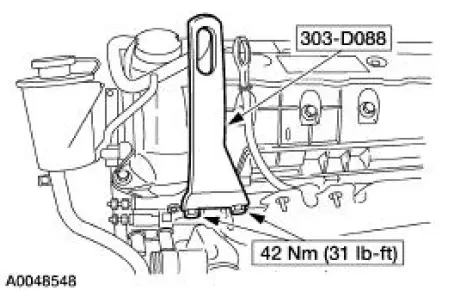
17. Fill the engine crankcase with clean engine oil.
 Removal
Removal
1. Disconnect the battery ground cable.
2. Remove the air cleaner outlet tube. For additional information, refer to
Section.
3. Remove the radiator sight shield.
4. Install the special tool.
5. Us ...
 Flywheel
Flywheel
Removal
1. Remove the clutch components.
2. Remove the bolts and the flywheel.
Installation
1. To install, reverse the removal procedure.
Tighten the bolts in the sequence shown.
...
Other materials:
Supply Manifold
Removal and Installation
WARNING: Do not smoke or carry lighted tobacco or open flame of any
type when
working on or near any fuel related components. Highly flammable mixtures are
always present
and may ignite. Failure to follow these instructions may resul ...
Crankshaft Front Oil Seal
Special Tool(s)
Crankshaft Seal
Installer/Aligner
303-335 (T88T-6701-A)
Front Cover Seal Remover
303-107 (T74P-6700-A)
Crankshaft Seal Installer
303-635
Crankshaft Damper Replacer
303-102 (T74P-6316-B)
...
Steering System (Description and Operation)
The steering system has a typical rack-and-pinion design consisting of the
following:
Steering System Components - 3.8L Engine (CII Power Steering
Pump)
Steering System Components - 4.6L Engine (CIII Power Steering
Pump)
...
